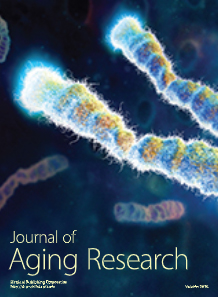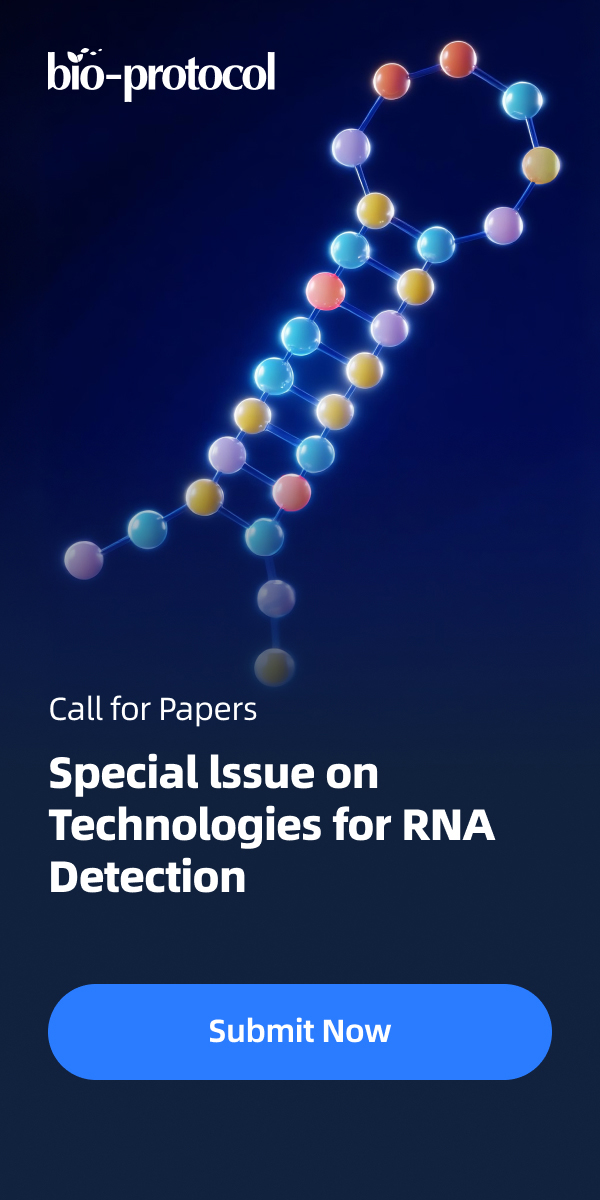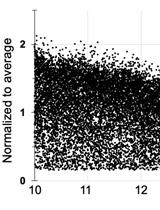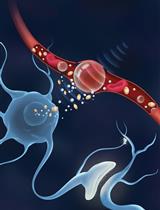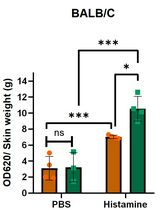- EN - English
- CN - 中文
A New Efficient Method for Measuring Oxygen Consumption Rate Directly ex vivo in Human Epidermal Biopsies
一种直接离体测量人体表皮活检耗氧率的新方法
(*contributed equally to this work) 发布: 2019年03月05日第9卷第5期 DOI: 10.21769/BioProtoc.3185 浏览次数: 7015
评审: mohan babuAmriti Rajender LullaAnonymous reviewer(s)
Abstract
Skin cells are constantly exposed to environmental influences such as air pollution, chemicals, pathogens and UV radiation. UV radiation can damage different biological structures, but most importantly cellular DNA. Mitochondria contain their own genome and accumulate UV-induced DNA mutations to a large extent. This can result, e.g., in accelerated skin aging. Understanding the impact of harmful external influences on mitochondrial function is therefore essential for a better view on the development of age-related diseases. Previous studies have been carried out on cell cultures derived from primary cells, which does not fully represent the real situation in the skin, while the mitochondrial parameters were considered barely or not at all. Here we describe a method to measure mitochondrial respiratory parameters in epithelial tissue derived from human skin biopsies using an Agilent Seahorse XF24 Flux Analyzer. Before the assay, epidermis and dermis are separated enzymatically, we then used the XF24 Islet capture microplates to position the epidermis samples to measure oxygen consumption rates (OCR) and extracellular acidification rates (ECAR). In these plates, small nets can be fixed to the plate bottom. The epidermis was placed with the vital–basal–side on the net. Active ingredients in the three ports were injected consecutively to determine the effect of each compound. This allows determining the efficiency of the individual complexes within the respiratory chain. This protocol enables the testing of toxic substances and their influence on the mitochondrial respiration parameters in human epithelial tissue.
Keywords: Oxygen consumption rate (耗氧率)Background
The human skin is the largest organ of the human body and functions as a physical barrier shielding the body from a number of harmful external agents such as air pollution or solar radiation (Gebhard et al., 2014). Solar radiation, e.g., induces increased production of reactive oxygen species (ROS) and thereby DNA damage and mutations in skin, which results in skin aging and skin cancer (Gebhard et al., 2014). Mitochondrial dysfunction resulting from DNA damage is thought to play an important role in these and other essential cellular processes. The accumulation of reactive oxygen species (ROS)-damaged mitochondrial DNA (mtDNA) and proteins can induce mitochondrial dysfunction within the electron transport chain (ETC) and in turn lead to an enhanced ROS production and increased mitochondrial dysfunction (Furda et al., 2012; Yoshida et al., 2012). According to the ‘mitochondrial theory of aging’, this vicious cycle is a major cause for cellular aging, tissue dysfunction and degeneration (Harman, 1972). Understanding the impact of harmful external influences on mitochondrial function is therefore essential for a better view on aging in general. Unfortunately, the measurement of mitochondrial respiration in cell cultures cannot completely reflect the real situation in skin. We therefore established an efficient method to measure the mitochondrial respiration ex vivo directly in human epidermis biopsies with the Seahorse XF24 Flux Analyzer and Seahorse XF24 Islet Capture microplates. The XF24 Analyzer is a multi-well plate system which measures oxygen consumption rates (OCR) and extracellular acidification rates (ECAR) by changes in the fluorescence of solid state fluorophores. In this system, up to four different ports can be used to inject compounds to obtain a mitochondrial respiration profile. The procedure described in this protocol includes the preparation of the biopsies, the preparation of the epidermis for insertion into the XF24 Analyzer and the measurement of mitochondrial parameters by the addition of specific mitochondrial inhibitors. This protocol was established for the testing of toxic substances and their influence on the mitochondrial respiration parameters in human epithelial tissue. In addition, age-related effects of various substances can be tested based on the age of the donor. The analysis of mitochondrial respiration in epidermis derived from skin biopsies represents an important addition to existing screenings.
Materials and Reagents
- Centrifuge tubes 15, 50 ml (SARSTEDT, catalog numbers: 62.554.001, 62.547.254)
- Microscope slides (Carl Roth, catalog number: 1879.1)
- Petri dishes (SARSTEDT, catalog number: 83.3902)
- Pipette tips 10 μl, 20 μl, 200 μl, 1,000 μl (SARSTEDT, catalog numbers: 70.1130, 70.116, 70.760.002, 70.762)
- Sterile filter 0.2 μm (SARSTEDT, catalog number: 83.1826.001)
- Human skin biopsies (kept in 1x PBS at 4 °C for a maximum of 36 h)
- 2-Propanol (Carl Roth, catalog number: 9866.1)
- Dispase II (neutral protease, grade II) (Roche, catalog number: 04942078001, storage temp. 4 °C)
- Dulbecco’s modified Eagle’s medium, high glucose (Sigma-Aldrich, catalog number: D7777-10L, storage temp. 4 °C)
- KBMTM Gold Keratinocyte Growth Medium BulletKitTM (Lonza, catalog number: 00192060, storage temp. 4 °C)
- KCl (Carl Roth, catalog number: 6781.3)
- KH2PO4 (Carl Roth, catalog number: 3904.2)
- Na2HPO4·12H2O (Carl Roth, catalog number: N350.1)
- NaCl (Carl Roth, catalog number: 3957.3)
- NaOH (Carl Roth, catalog number: 6771.3)
- Seahorse XF Calibrant Solution (Agilent Technologies, catalog number: 100840-000)
- Seahorse XF Cell Mito Stress Test Kit (Oligomycin, FCCP, Rotenone/Antimycin A) (Agilent Technologies, catalog number: 103015-100, storage temp. -20 °C)
- 10 M NaOH (see Recipes)
- 1x PBS (see Recipes)
- Enzymatic digestion Solution (see Recipes)
- XF assay medium (see Recipes)
Equipment
- Scissor, stainless steel (Carl Roth, catalog number: HCX4.1)
- Seahorse Capture Screen Insert Tool (Agilent Technologies, catalog number: 101135-100)
- Seahorse XF24 Islet Capture FluxPak containing sensor cartridges and Islet Capture Microplates (Agilent Technologies, catalog number: 101174-100)
- Tweezers, stainless steel (Carl Roth, catalog number: 2687.1)
- Incubator at 37 °C without CO2 (GFL, catalog number: 4010)
- pH Meter FiveEasyTM F20 (Mettler Toledo, catalog number: 30266626)
- Pipettes, Eppendorf Research® Plus 10 μl, 20 μl, 200 μl, 1,000 μl (Eppendorf, catalog numbers: 3123000020, 3123000039, 3123000055, 3123000063)
- Seahorse XF24 Flux Analyzer (Agilent Technologies, model: XF24, catalog number: 100737-100)
Software
- Seahorse XF24 Flux Analyzer Software (instrument software) (Agilent Technologies, Version 1.8.1.1)
- Wave (analysis software) (Agilent Technologies, Version 2.6)
Procedure
文章信息
版权信息
© 2019 The Authors; exclusive licensee Bio-protocol LLC.
如何引用
Schniertshauer, D., Gebhard, D. and Bergemann, J. (2019). A New Efficient Method for Measuring Oxygen Consumption Rate Directly ex vivo in Human Epidermal Biopsies. Bio-protocol 9(5): e3185. DOI: 10.21769/BioProtoc.3185.
分类
细胞生物学 > 组织分析 > 生理学
您对这篇实验方法有问题吗?
在此处发布您的问题,我们将邀请本文作者来回答。同时,我们会将您的问题发布到Bio-protocol Exchange,以便寻求社区成员的帮助。
Share
Bluesky
X
Copy link


